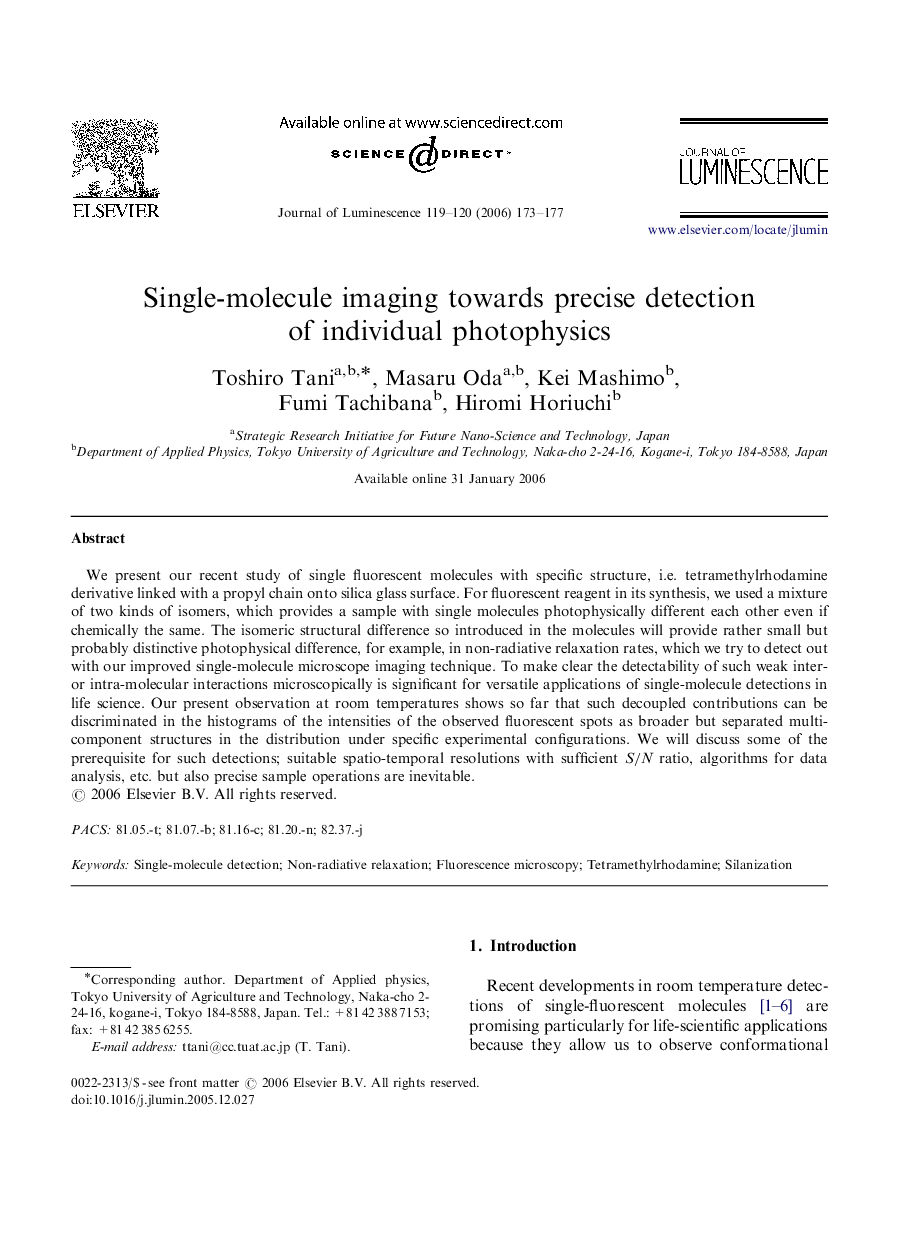| Article ID | Journal | Published Year | Pages | File Type |
|---|---|---|---|---|
| 5404167 | Journal of Luminescence | 2006 | 5 Pages |
Abstract
We present our recent study of single fluorescent molecules with specific structure, i.e. tetramethylrhodamine derivative linked with a propyl chain onto silica glass surface. For fluorescent reagent in its synthesis, we used a mixture of two kinds of isomers, which provides a sample with single molecules photophysically different each other even if chemically the same. The isomeric structural difference so introduced in the molecules will provide rather small but probably distinctive photophysical difference, for example, in non-radiative relaxation rates, which we try to detect out with our improved single-molecule microscope imaging technique. To make clear the detectability of such weak inter- or intra-molecular interactions microscopically is significant for versatile applications of single-molecule detections in life science. Our present observation at room temperatures shows so far that such decoupled contributions can be discriminated in the histograms of the intensities of the observed fluorescent spots as broader but separated multi-component structures in the distribution under specific experimental configurations. We will discuss some of the prerequisite for such detections; suitable spatio-temporal resolutions with sufficient S/N ratio, algorithms for data analysis, etc. but also precise sample operations are inevitable.
Keywords
Related Topics
Physical Sciences and Engineering
Chemistry
Physical and Theoretical Chemistry
Authors
Toshiro Tani, Masaru Oda, Kei Mashimo, Fumi Tachibana, Hiromi Horiuchi,
